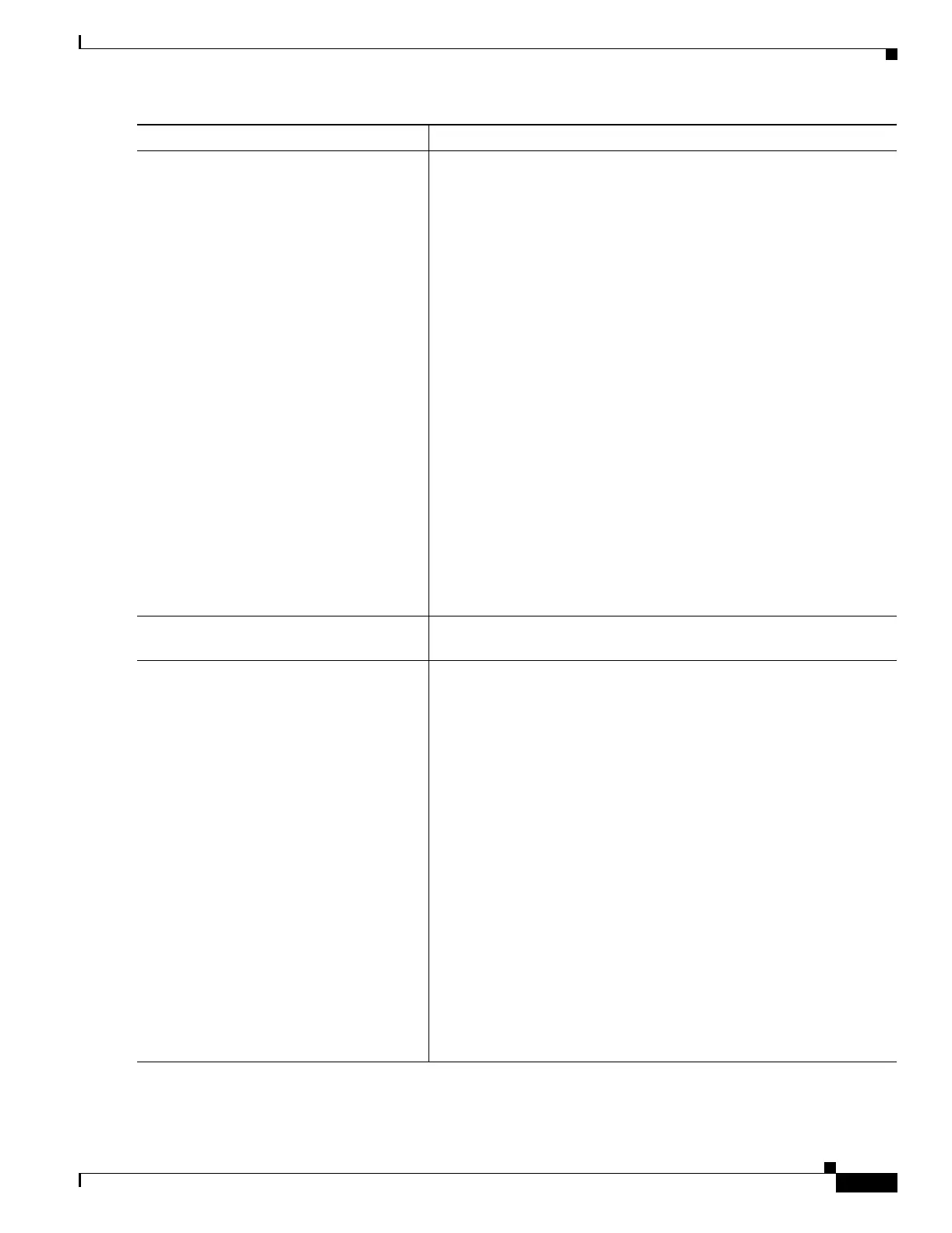26-91
Catalyst 3750 Metro Switch Software Configuration Guide
78-15870-01
Chapter 26 Configuring QoS
Configuring Hierarchical QoS
Step 4
bandwidth {bandwidth-kbps | percent
percent}
Specify the minimum bandwidth provided to a class belonging to the
egress policy-map when there is traffic congestion in the switch. If the
switch is not congested, the class receives more bandwidth than you
specify with the bandwidth command.
CBWFQ derives the weight for packets belonging to the class from the
bandwidth allocated to the class. CBWFQ then uses the weight to
ensure that the queue for the class is serviced fairly.
By default, no bandwidth is specified.
You can specify the bandwidth in kbps or as a percentage:
• For bandwidth-kbps, specify the bandwidth amount in kbps
assigned to the class. The range is 200 to 2000000. Allocate the
bandwidth in 100-kbps increments; otherwise, the software rounds
down the bandwidth to the nearest 100-kbps increment.
• For percent percent, specify the percentage of available
bandwidth assigned to the class. The range is 1 to 100. The sum of
the class bandwidth percentages within a single policy map cannot
exceed 99 percent. Percentage calculations are based on the
bandwidth available at the parent class (or the physical level if it
is the parent).
Specify all the class bandwidths in either kbps or in percentages, but
not a mix of both. The amount of bandwidth configured should be large
enough to accommodate Layer 2 overhead.
Step 5
random-detect dscp-based Enable DSCP-based WRED as a drop policy. By default, WRED is
disabled.
Step 6
random-detect dscp dscp min-threshold
max-threshold mark-prob-denominator
Specify packet threshold and mark-probability values for a specific
DSCP value:
• For dscp, enter a DSCP value. The range is 0 to 63. You also can
enter a mnemonic name for a commonly used value.
• For min-threshold, enter the minimum threshold in packets. The
range is 1 to 32768. When the average queue size reaches the
minimum threshold, WRED randomly drops some packets with
the specified DSCP value.
• For max-threshold, enter the maximum threshold in packets. The
range is 1 to 32768. The default is 128. When the average queue
size exceeds the maximum threshold, WRED drops all packets
with the specified DSCP value.
• For mark-prob-denominator, enter the denominator for the
fraction of packets dropped when the average queue size is at the
maximum threshold. The range is 1 to 65535. The default is 10.
For example, if the denominator is 512, one out of every 512
packets is dropped when the queue is at the maximum threshold.
For a list of the default settings for a specified DSCP value, see the
command reference for this release.
Command Purpose

